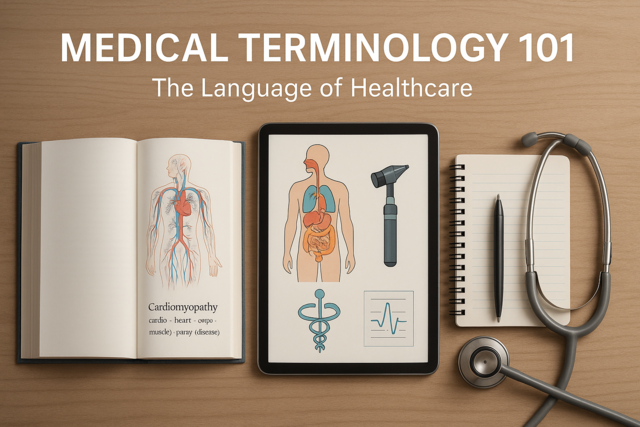Defining what a nursing assistant is or does sounds easy but is actually very complex. There's the technical definition and there's the reality. These can be quite different in the real world! If you had to sum up "nursing assistant" in just a few words, the definition might read something like this:
"Trained individual who assists with daily living tasks and performs routine medical testing of vital signs for patients. Will usually report to a registered nurse and be expected to keep accurate patient records."
But this definition is far too simple! It simply doesn't take into consideration the complexity and often demanding nature of the job. It also doesn't acknowledge the emotional rewards of being a nursing assistant. In this job, you will have daily contact with your patients and form a bond with them; you'll laugh with them and cry with them. In some cases you may be the best support and closest friend they have.
- Anne clocks in and reports to the head of her nursing team. Together, they review the day's duty roster and touch base about any concerns either of them have about patients. Anne will learn if any of her patients are being discharged and if any new patients will be moving into the facility.
- Discharge duties will be handled at the assigned time, including preparing paperwork and getting all signatures necessary, helping the patient gather up personal belongings and if necessary, arranging for transportation.
- Throughout the day, Anne will make the rounds of her patients. In a nursing home, patient mobility will vary. Anne is usually in charge of eight patients every day. Duties for each patient will include:
-
- Recording blood pressure, temperature and pulse at specified times throughout the day.
- Making sure each patient has taken any prescribed medications.
- Changing bed linens.
- Assisting with patients' personal hygiene, including sponge bathing bedridden patients, assisting with combing hair, make-up application and brushing teeth.
- Coordinating physical therapy and counseling for each patient as directed by the nurse or doctor in charge.
- Delivering meal trays to all of her patients and feeding the patients who require assistance.
- Making sure her patients have fresh ice water at all times.
- Answering any call lights from patients on her duty roster.
- Administering bedpans and urinals when needed.
- Keeping track of and charting catheters.
-
- Today, when Anne is in Jim's room she notices that he has lost bladder control. This hasn't happened before, and she is concerned. She assists him to his wheelchair, changes his bed linens, sponge bathes him and notes on his chart what has happened. She alerts the duty nurse to the situation. During all of this, she reassures Jim, who is upset and embarrassed. Anne stays with him for an extra few and chats about his grandchildren in the hope that this will cheer him up. She makes a note to talk to the nurse again at the end of her shift. She will also check in on Jim throughout the day.
- When Anne is in Mary's room they talk about Mary's big day. Her family is coming to visit for her birthday. Anne helps her choose an outfit, fix her hair and put on some makeup.
- Anne visits Ray, a patient who has been ill recently and will be moving to a nearby hospital soon for acute care. Since Ray is bedridden, Anne has to make sure he doesn't receive bed sores and so every two hours she turns him and adjusts the bedding. She also moves his limbs and massages his arms and legs to help with circulation and prevent the development of bed sores.
- Another patient is being discharged so Ann prepares the required discharge papers and goes over them with the patient's family. This entire process take about one hour to complete.
- At the end of her shift, Anne reviews every patient's chart with her superior before leaving for the day.
On any given day, Anne might also empty catheters, change wound dressings, assist with post-mortem care, escort/transport patients to facility activities and appointments, assist patients who are having eating difficulties and orient new residents and their families to the facility's routines.
Training and Qualifications
The outline of the day's activities for a nursing assistant sounds busy, doesn't it? Most days as a nursing assistant will be very busy and you may be called upon to make life and death decisions. This is why being a nursing assistant requires proper training and why most hospitals and health care facilities have specific qualifications for their nursing assistants.
Every state requires that nursing assistants be certified in order to work in a health care facility. To receive certification you need to be a high school graduate or have a GED and pass an exam given by the state in which you reside. The most important training you will receive, however, will be the hands-on experience you get when you accept your first job.
Professional Attitude & Compassion
Some of the most important aspects of being a nursing assistant cannot be learned by reading about them or studying them. These aspect aren't techniques or knowledge, but rather personality characteristics such as professionalism and compassion.
A nursing assistant must always maintain a professional attitude and remain calm and efficient even in stressful situations. Each patient's health and well-being relies on you performing your duties properly. A professional will take the time to record all information carefully and double-checks her records every time. She will not rush or cut corners in order get her work done early. She will also leave her personal concerns at home so that she can focus entirely on her patients at all times.
Compassion is the other trait that simply can't be learned -- it is the ability to understand and sympathize with your patients even when they are being difficult or demanding. A compassionate nursing assistant remembers that the extremely elderly may routinely become quarrelsome and easily agitated and require extra patience. She will also understand that if a patient lashes out at her or is verbally abusive, it is not a personal attack but is probably the result of pain or illness.
Vital Signs and Body Measurements
An effective nursing assistant must be able to measure and record vital signs accurately for many different types of patients. The standard vital signs are an important indicator of the health and well-being of a patient. In most cases, the nursing assistant will take the vital signs of each patient at least three times a day (morning, afternoon and before the patient retires for the evening). You may also be expected to record standard information such as height and weight for patient records. Although these aren't considered vital signs, they can contribute to the understanding of the patient as a whole and give a more complete picture of the patient's health and general physical status.
The vital signs that will most often concern you as a nursing assistant are:
- Pulse & respiration
- Blood pressure
- Temperature
- Height & weight
Pulse & Respiration
The pulse indicates the number of times the heart beats per minute as well as its effectiveness at pumping blood through the circulatory system. As the heart pumps blood through the arteries, the arteries expand and contract. As you take a patient's pulse, you will also assess its strength and the heart's rhythm, both of which can indicate possible concerns. The normal pulse rate for a healthy adult can be anywhere from 60 to 100 beats per minute, and will fluctuate with exertion, illness or stress. On the whole, women tend to have slightly faster heart rates than men. Extremely athletic individuals can have heart rates lower than the norm because of their cardiovascular training.
Checking the Pulse
The pulse is checked by finding a point on the body where you can clearly feel the individual beats as blood pumps through an artery. You will count the number of beats that occur in a sixty second time frame. Generally you will check the pulse on either the wrist (radial pulse) or the neck (carotid pulse). You can also find a pulse inside the elbow.
- Locate a spot (preferably the wrist) where you can easily feel the pulse.
- Press firmly but gently on the artery with your first and second fingertips.
- Begin counting the pulse when the sweep second hand on your watch reaches the 12. Count the pulse for sixty seconds. Concentrate on counting accurately -- whisper softly if it helps you to keep track.
- Some people will count the beats in 15 seconds, and then multiply by four, but a full sixty second count is preferable for accuracy.
Always pay attention to the strength and steadiness of the pulse as well. If the pulse seems irregular or has become weaker than in the past, this should be reported to your superior to make sure the appropriate medical precautions are taken.
Respiration
Respiration measures the number of breathes taken in one minute. Again, in order to get an accurate result, you should measure this in a patient who is at rest or relaxed . A person's respiration rate usually increases when they are running a fever, ill or has suffered a serious injury. The average person takes 15-20 breathes for minute. If a patient's respiration rises above 25 breaths per minute or falls below 12 breaths per minute, it can be a sign of potential problems and should be reported to the nurse in charge.
Measuring Respiration
Generally the most accurate measurement of respiration can be measured by counting the number of breaths taken in a minute without the patient being aware. You can be talking to your patient and watching the rise and fall of his or her chest to count the breaths. Measuring respiration is particularly important if a patient has suffered from past cardio-pulmonary problems or is currently recovering from a recent heart-related illness.
Blood Pressure
Blood pressure is one of the most important indicators of patient health. It measures how much force the blood is exerting against the artery walls. There are two halves to the blood pressure reading:
- Systolic pressure measures the pressure inside an artery when the heart contracts to pump blood into the body.
- Diastolic pressure measures the pressure inside an artery when the heart is resting and is re-filling with blood.
Blood pressure is measured in millimeters of mercury, or "mmHG" and is indicated by how high the mercury column rises in a blood pressure gauge, called a sphygmomanometer. This instrument consists of a cuff that goes around the patient's arm, a bulb for inflating the cuff and the mercury column.
Lower than normal blood pressure can lead to dizziness or faintness that can contribute to falls. Low blood pressure is also an indicator that other underlying health problems may be present. High blood pressure, of course, can lead to complications such as heart attack or stroke. High blood pressure is usually considered to be anything 140 mmHg or higher of systolic pressure and 90 mmHg or higher of diastolic pressure.
Pre-hypertension is usually in the range of 120-139 mmHg systolic and 80-90 mmHg diastolic pressure. In the elderly, however, blood pressure tends to increase because the blood vessels become less elastic and respond more slowly. In people of advanced age, blood pressure could be considered normal when it is as high as 120/70 to 150/90. Familiarizing yourself with each patient's chart and discussing what is normal for each patient is the best way to keep understand what is or isn't a concern when monitoring blood pressure.
Taking Blood Pressure Readings
You should check blood pressure when the patient is at rest so that you get an accurate reading that is not affected by physical exertion or stress. He or she should be either lying down or seated and at ease, preferably at least an hour after any meals. The arm should be slightly flexed but relaxed. If the patient is sitting, the forearm should be resting at heart level on a supportive surface.
Wrap the deflated blood pressure cuff around the arm about an inch above the bend in the elbow with a snug (but not tight) fit. When fastening it around the arm, be sure to place the rubber bag over the inner part of the arm so that it is above the artery. Place a stethoscope directly over the artery but not touching the cuff.
Pump the bulb to inflate the cuff until the mercury reads 150 mmHg, which is above normal for systolic pressure. If you immediately hear pulse sounds through the stethoscope, you will need to pump an additional 20 mmHg and try again. When you no longer hear anything, slowly begin releasing pressure in the cuff -- about two or three mmHg mercury at a time until you can hear a sound with each heart beat. This is the sound of the patient's blood beginning to flow through the artery. The reading on the meter at this time is the systolic blood pressure.
Keep listening as you continue to deflate the cuff. When the sound completely disappears, check the mercury reading for the diastolic pressure. You will be able to sense when you're approaching the diastolic pressure point because the sounds of the blood flow will become dull and muffled just before stopping.
Height and weight measurements -- Not Vital, but Important
Measuring height and weight are fairly straight-forward procedures. In most health care settings, you can simply have the patient step onto a scale that will also have an accurate rule for measuring height at the same time. These measurements aren't usually taken on a daily basis in a hospital or nursing home unless they are necessary to monitor a particular illness or condition.
You may be asked to periodically check the height of a patient who suffers from conditions such as osteoporosis. Weight may be monitored closely if a patient is severely underweight or not eating properly. Depression and illness are two problems that can contribute to excess weight loss.






























